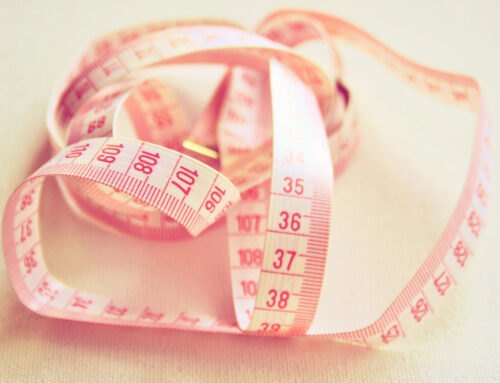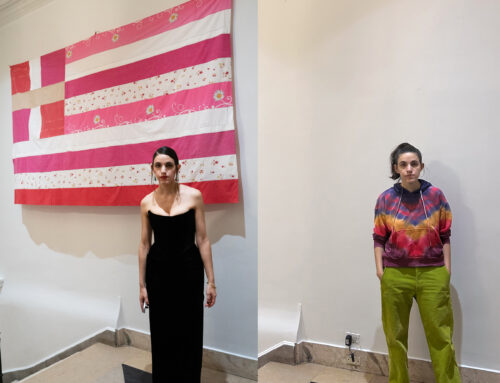A series of Vogue, Vanity Fair, and Maire Claire magazines are piled in my childhood bedroom—some of which have been read and reread multiple times. I refuse to throw the magazines out, convincing my family that I had to bring them to college with me. As a child, I devoured each fresh issue that was sent in the mail as I would books. Though I was an avid lover of fiction reads, fashion magazines offered their own cocktail of rhetoric and imagery, giving my eyes the luxury of seeing designers’ and creators’ artistic visions transformed into garments and careful poses. I made it a point to never skim the articles but to rather delve into the prose, study the cover—the model’s facial features and sophisticated posture—and try to make sense of the fashion industry’s language. Though I had no intention of entering the fashion industry, I found the celebration and recognition of women to be empowering. Yet, what I managed to gloss over during my years of reading Vogue was how distant the magazine felt to my own appearance and cultural upbringings. In many ways, I was trying to find my place in a platform that wasn’t built with women like me in mind.
Within my own family, fashion and beauty were timeless, evolving with each generation of women. My grandmother dressed in traditional Indian sarees and wore her black-beaded necklace each day to symbolize her wisdom and spirituality. Her sarees, many of which were electric and bright in color, beautifully contrasted her caramel brown skin color. Her daughter, my mother, took Indian beauty in a different direction and instead chose to wear modern Indian dresses with clean lines and distinct patternings. Though their wardrobes look strikingly different, they embody authenticity, grace, and respect for a culture that has a rich history of fashion and independence.
The realization that American fashion magazine covers didn’t feature the kind of generational fashion I saw in my home came slowly. Initially, I had separated the women in my life from the models showcased on Vogue covers, assuming that the two worlds were too different to blend together on a singular canvas. Yet, I’ve slowly realized that these two realms of my life are severely interconnected and juxtaposed in ways that should not be neglected. It’s only in retrospect that I see the damage done by an industry that many hold in such high regard. I neglected to adopt my grandmother’s and mother’s Indian clothing styles because they didn’t match the notions of beauty showcased and applauded by fashion magazines. Environments outside my home, whether it be school or shopping malls, only compounded the influence of the fashion industry. Though I lived in a world that claimed to embrace all forms of beauty and self-expression, I continued to be confined by the notion that beauty went hand-in-hand with whiteness.
Until recently, there hadn’t been a drastic change in the way Vogue addresses diversity—especially Black culture. From featuring models and employing individuals who are primarily white, Vogue has upheld a vision that outwardly neglects diversity—both in its workplace and magazines. However, Vogue’s September 2020, which was released in the midst of the Black Lives Matter (BLM) movement, looked different. Pieced together when millions of individuals were marching in protests and calling out institutions that have perpetuated structural inequity, employees at Vogue pushed for a cover that addressed the racism that they saw in their own workplace. All twenty-six Vogue covers shared the theme of “hope,” featuring a positive vision for the future all while hoping to unite the magazine’s millions of readers. One particular cover pushed readers to look past a woman’s dark skin tone and to seek out her complexities; her luscious twisted braid, the small carvings etched into her lips, and the backdrop of a small pink house. In a memo sent to Vogue employees in early June, Anna Wintour, Editor-in-Chief of Vogue since 1988, stated that “I want to say plainly that I know Vogue has not found enough ways to elevate and give space to Black editors, writers, photographers, designers, and other creators. We have made mistakes, too, publishing images or stories that have been hurtful or intolerant. I take full responsibility for those mistakes.”
Though this message was sent with good intentions, Black employees and staffers at Vogue expressed their sincerest thoughts on Wintour’s hypocrisy and the veiled difficulties that come with working for Vogue. Former staffer Shelby Ivey Christie tweeted: “My time at Vogue, at Condé Nast, was the most challenging and miserable time of my career. The bullying and testing from white counterparts, the completely thankless work, the terrible base pay, and the racism was exhausting.” Moreover, Black journalists who have collaborated with Wintour in the past have reported that Vogue welcomes only certain types of employees (typically White and educated at elite schools), leaving little space for women of color, disabled individuals, and those of lower socioeconomic levels.
Vogue’s messy history with race has come into the spotlight once again with the release of Vice President Kamala Harris’s cover in February 2021, shortly after the Presidential Inauguration. The bright February issue cover featured Harris in a dark jacket, skinny jeans, and converse backdropped by a pink silk drape (representing the color of her Howard University sorority, Alpha Kappa Alpha). Harris’s pose is laid-back and casual, almost as if she’s caught in the midst of a laugh with her hands resting near her waist. Soon after this cover was released, critics poured their comments into social media feeds, denouncing the cover for being “kind of messy” and “using unflattering lighting.” According to The New York Times, the primary word used to describe the cover was “disrespectful.” All in all, the cover struck readers as a misrepresentation, rather than celebration, of Vice President Kamala Harris.
Soon after, Vogue released an alternative cover for the February 2021 issue, featuring Harris in a more formal suit complete with an American Flag pin backdropped by a gold-colored silk drape. This time, her stance was poised and professional — arms crossed as she smiled straight ahead. In a statement reacting to the controversy, Vogue said it elected to use more casual images of the Vice President because it “depicted Harris’s authentic, approachable nature which is one of the hallmarks of the Biden-Harris Administration.” In response, critics mentioned that the casual cover reduced the immensity of Harris’s victory and discounted what Harris, the first woman of South Asian and African descent to take office as Vice President, represents. Others also noted that Harris’s skin appears to be “washed out,” effectively undermining people of color.
Proper representation is a critical, though at times hazy, space to navigate—especially for a magazine that has featured very few individuals of color in the past. As a premier fashion magazine that routinely spotlights public figures and women in politics, Vogue holds the vital responsibility to respectfully recognize and portray the diverse women who have, and are continuing to, break through glass ceilings.




